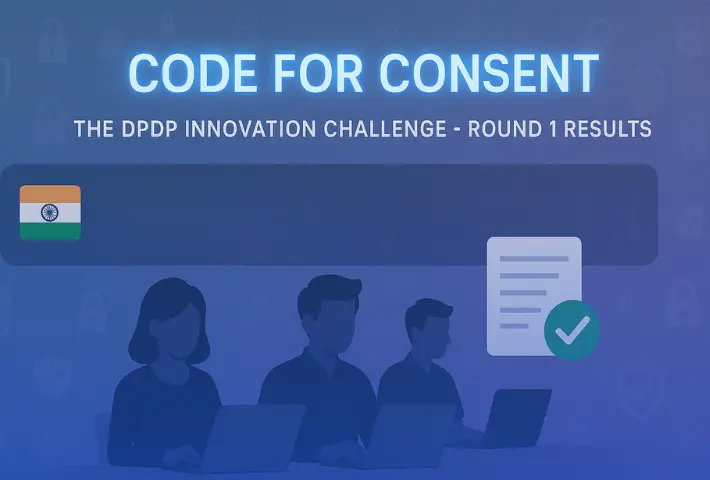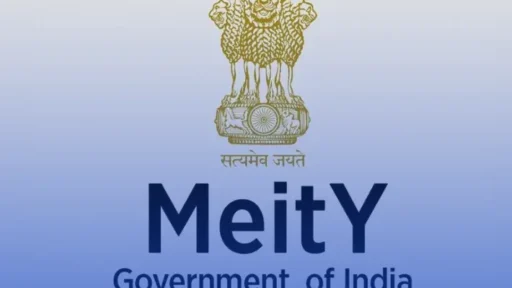Metadata often called “data about data” is a quiet enforcer in the digital privacy world. It includes details like who did what, when, and for what purpose (timestamps, user IDs, purpose IDs, language, etc.). Under India’s new Digital Personal Data Protection Act (DPDPA, 2023), explicit consent is the legal basis for most data processing, and metadata captures every consent action. In other words, even though end users barely see it, metadata is crucial for proving compliance. As one compliance guide notes, the DPDPA makes consent “a core pillar of lawful data processing,” and this cannot be proven without robust metadata logs.
Consent in India’s New Data Protection Landscape
India’s DPDP Act (often called DPDPA) shifts power to the individual. Data principals (ordinary users) have rights like informed, specific, and revocable consent. Consent must be granular (no bundled “take-it-or-leave-it” checkboxes) and unambiguous. In practice, this means every time a user agrees to share, say, their email or location, the system must record that choice clearly. The DPDPA even contemplates independent “Consent Managers” new intermediaries who help users give and manage consent. Throughout this consent lifecycle, all interactions leave behind metadata. These invisible records (who consented, when, how, for what) give the Data Protection Board and regulators evidence that rules were followed. Simply put, consent without metadata is just a blank promise.
Metadata: Data about Data
What is metadata? In privacy terms, metadata is any information describing or qualifying other data. Examples include a file’s creation date, or in our context: the time a user clicked “I Agree,” the user’s ID, the device or IP address used, and the specific purposes listed in the notice. Although metadata operates behind the scenes and may seem dry, it plays a crucial role in understanding how personal data is handled. For example, if someone files a complaint about data misuse, regulators will examine the metadata to verify when and how that individual gave consent. Metadata provides this timeline and context. It also helps ensure only the right people see the data: systems can automatically check that the person withdrawing consent truly matches the logged user ID of the original consent.
Metadata falls into categories (descriptive, structural, administrative), but for consent management we care about administrative metadata: who, when, and why of data processing. This can include the user’s language preference, their device or IP, and even a unique “consent ID” assigned by the system. By logging this “invisible” data for each consent action, organizations turn privacy promises into verifiable events.
Metadata in the Consent Management Lifecycle
In a modern Consent Management System (CMS), metadata is recorded at every step. During Consent Collection, when a user first agrees to a privacy notice, the CMS immediately logs key details. For example, India’s technical guidelines explicitly call for “keying in metadata: user IDs, timestamps, consent status, purpose IDs” at collection time. Imagine a customer on a banking app: when they tap “I Agree” to share transaction history for analytics, the CMS saves who tapped, exactly when, and which purposes were checked.
As the consent journey continues, any change is also logged with metadata. If the user updates or renews consent (e.g. new marketing preferences or extended retention), the system again generates a timestamp and records the change. The system logs all renewal actions with comprehensive metadata, including the User ID, timestamp, renewed purpose IDs, and status. Similarly, when a user withdraws consent for a purpose, the system records the withdrawal event with a timestamp and the affected purpose ID. In fact, the guidelines stress an immutable audit log for every action.
Here are typical metadata fields saved for each consent record:
- User/Data Principal ID: A unique identifier tying the consent to the individual (often an account or customer ID).
- Timestamp: Date and time when the consent was granted, updated, or withdrawn.
- Purpose ID(s): Coded or named purposes of processing that the user consented to (e.g. “marketing,” “analytics”).
- Consent Status: Whether consent is active, withdrawn, or denied.
- Language and Form Version: The user’s language and which privacy notice version they saw.
By keeping these metadata points, the consent artifact becomes a secure record. As one guide describes, the CMS should output a “consent artifact – a secure, verifiable consent record in the CMS database” for every action. That artifact is nothing but a package of metadata and related consent info, stored in a way that can’t be tampered with.
Importantly, all audit logging revolves around metadata.The Consent Management System (CMS) records every consent action—whether it’s a grant, update, or withdrawal—along with metadata such as user ID, purpose ID, timestamps, and consent status. In practice, this ensures that if a user changes their mind or a regulator questions a data processing activity, there’s a concrete log entry to serve as proof. Even cookie consents follow this model, as regulations require all consent decisions to be logged with detailed metadata for auditing purposes.
Audit Trails: Logging for Compliance
Why this fanatical tracking of metadata? The answer is accountability. The DPDPA and its draft rules expect organizations to maintain verifiable records of consent so they can demonstrate compliance on demand. In fact, a compliance guide advises that businesses “must retain verifiable records of all consent-related actions,” including “timestamped logs of consent granted or withdrawn” and even “Consent ID and metadata”. These are not optional nice-to-haves, they form the evidence that companies knew what they were doing.
Think of it as building a legal trail. If a data principal complains or an audit occurs, the Data Protection Board (DPB) will ask, “Can you show us?” At that point, an organization must produce the log showing who said yes, when, and to what. Without detailed metadata, this is impossible. As one expert blog puts it, maintaining “detailed records of consent actions with time stamps” is essential for traceability. Organizations are encouraged to embed such tracking from the ground up.
In practical terms, metadata logs enable features like consent dashboards and audit reports. For example, Indian CMS designs include a user dashboard where data principals can view their consent history. That history screen displays metadata (timestamp, purpose, status) for each past consent. Meanwhile, on the back end, compliance officers or regulators can query the centralized logs to see exactly which users consented to what, and verify the precise wording of the notice they saw at the time.
By keeping an immutable trail of metadata, companies also protect themselves. Regulatory guidance notes that audit logs should be comprehensive and secure, providing “an immutable trail for compliance verification, dispute resolution, and regulatory audits”. In other words, if a company has followed the rules, metadata-rich logs will vindicate it, if not, the absence of records will itself be evidence of a breach.
Enforcement and the Data Protection Board
Under the DPDP Act, enforcement will be carried out by a newly constituted Data Protection Board of India. This board will have the power to issue fines and orders for violations. While the Act itself focuses on principles (like requiring explicit consent), the draft rules and officials clearly expect metadata to play a starring role in enforcement. In any investigation or dispute, the Board will rely on consent logs to determine liability.
For example, if a consumer alleges that a company used her data without permission, regulators will ask for the metadata log of the relevant consent. A properly logged system will easily answer: “Yes, user 123 agreed to purpose XYZ on Jan 5 at 10:23, and here is the record.” But without that log, the company has no proof. As one industry expert bluntly notes, valid consent requires auditable documentation. Businesses are urged to ask themselves if their systems log every affirmative action and withdrawal. If not, they risk severe non-compliance, regardless of whether the user claims or the Board investigates.
In effect, metadata makes the promise of ‘user control’ enforceable. The DPDP Act grants individuals the right to withdraw consent at any time, and metadata logs ensure this right is upheld. When a user withdraws consent, the Consent Management System (CMS) logs the event and immediately halts the relevant processing. The Board can then use these logs to verify that the request was handled properly. In this way, metadata supports not only day-to-day operations but also upholds the rule of law in digital privacy.
Best Practices and the Road Ahead
For Indian organizations preparing for DPDP enforcement, embracing metadata is non-negotiable. Some recommended steps include:
- Adopt a Consent Management Platform (CMP). Use a central CMP or CMS that automatically logs metadata as required. The official guidelines envision a shared platform (possibly run by the government or certified vendors) that “collects, monitors, and enforces consent exactly as the DPDPA requires”. Such systems ensure consistency across apps, sites and languages.
- Log Every Consent Event. Ensure that every time a user takes action, the system logs the details. This includes initial consent, any updates or renewals, and withdrawals. As mentioned above, include fields like User ID, purpose code, timestamp, and consent status. If you ask for consent in multiple languages, log that too.
- Maintain Immutable Audit Logs. Use secure, append-only logs (or write-once storage) to prevent tampering. Restrict access via role-based controls. According to the CMS blueprint, each audit log entry should contain a unique ID along with its metadata. This way, you can show a chronological record of who agreed to what, which cannot be altered after the fact.
- Enable User Transparency. Offer users a way to view and manage their consent records. The proposed CMS rules include a “View Consent History” feature that filters logs by date or purpose. Providing this transparency reinforces trust and helps catch discrepancies early.
- Plan for Compliance Audits. Regularly test that your logging works and keep backups. The DPDP Act encourages continuous audits. Having an up-to-date log lets you quickly produce evidence during audits or incident investigations.
Metadata: The Silent Backbone of DPDPA Enforcement
Implementing these measures can seem daunting, but they turn metadata into a strategic asset. Far from being mere IT overhead, good metadata practices can become a competitive advantage.
Metadata may work silently, but its role is anything but minor. In India’s DPDPA regime, every consent click generates a trove of metadata that fuels compliance. Without it, consent is just a checkmark in the interface with it, consent is a verifiable right. By recognizing and investing in metadata-driven consent management, organizations not only stay on the right side of the law, but also build trust with users. In the era of the DPDPA, metadata is the invisible glue that binds together technology, trust, and legal accountability.









